From fossils to footprints to petrified trees, Colorado’s distant past awaits you at every turn.
A Road Trip Into Colorado’s Prehistoric Past
Beneath Colorado’s majestic peaks, beside its roaring rivers, and nestled in the curves of its dramatic canyons, remnants of the prehistoric world have quietly waited for eons. Only over the past several centuries have people discovered these fossils, unlocking answers to the lives of ancient flora, the behavior of long-gone plants and animals, and the ever-changing landscape of this geologically dynamic state.
Pieces of the prehistoric past that you can personally witness in Colorado include the continent’s longest dinosaur trackway, the remains of an ancient rainforest, the stumps of petrified redwood trees, and much more. A lot can happen over several hundred million years—but here in Colorado, none of it’s hiding.

1. Wheeler Geologic Area
The striking landscape of the Wheeler Geologic Area in Creede, Colorado is the result of a massive volcanic eruption. The sharp peaks and spires formed millions of years ago when one of the largest volcanic eruptions in natural history hardened into a thick bed of rock. Smaller eruptions over the ensuing millennia caused volcanic ash to settle atop the field into layers called volcanic tuff. With each new layer forming, eroding, and shifting over millions of years, the field slowly evolved into the eerily beautiful Wheeler landscape.
Now part of the Rio Grande National Forest, the Wheeler Geologic Area is a 60-acre section of the forest, and a prime location for adventure. Getting there is half the fun—it’s only accessible by either a seven-mile hike or 14-mile off-road drive. If you opt for driving and need to stretch your legs, several hiking trails wind through the rock formations, crossing creeks and cresting peaks with an unthinkable geological backdrop.
The trip isn’t just a one-day journey. It’s recommended that visitors, whether driving or hiking, make it (at least) an overnight stay. Though camping isn’t permitted in Wheeler, there are several options nearby.
Colorado 81130

2. A Trail Through Time
Located about 30 miles west of Grand Junction, A Trail Through Time is a chance to explore old Colorado. Of course, we’re not talking 1800’s old—this is old as in prehistoric. A Trail Through Time offers visitors an up-close look at what remains of the massive animals who once called Colorado home.
Part of a still-active excavation site, this interpretive trail is a short, family-friendly hike that’s perfect for fossil lovers. Along the trail, you’ll find the fossilized skeletons of Camarasaurus, Diplodocus, and numerous plant fossils. Previous finds in the area include the bones of Apatosaurus, Brachiosaurus and Allosaurus.
The site is run by the Museums of Western Colorado, which also hosts a number of Dino Dig events throughout the summer, giving armchair paleontologists of all ages a taste of real-life fieldwork as well as a chance to personally discover potentially significant fossils.
Rabbit Valley Rd Mack, Colorado, 81525 United States

3. Star Dune and Hidden Dune
The Great Sand Dune National Park isn’t just a monument to the shifting sands of time, it’s also home to North America’s two tallest sand dunes.
The Star Dune (741 feet tall) is accessible via the summit of nearby High Dune, or from its base along the Medano Creek bed. Once there, you’ll witness the area’s unique wildlife, including several endemic insect species including the Tiger Beetle, a flying predator named for its distinctive coloring; the Circus Beetle, which gets its name from a defensive headstand-like posture; and the petite Flower beetle, clocking in at about half the size of a pencil tip.
Hidden Dune (also 741 feet) is—as advertised—tucked away deep in the dunefield, not to mention the false summit that hides the actual peak for most of the hike. Thankfully, the way down is made quicker by sandboards and sleds which you can rent from several locations near the park.
Both dunes are ideal locations for unparalleled stargazing. In fact, the Great Sand Dunes Park became an internationally certified Dark Sky Park in 2019.
Both hikes are strenuous, so wear sturdy shoes and set out in the cooler morning hours, especially for summer visits. With adequate preparation, you’ll likely have this otherworldly landscape featuring all its unique ecosystems (did you know the park features both tundra and wetlands?) all to yourself.
1999 Highway 150 Alamosa, Colorado, 81146 United States

4. Florissant Fossil Beds
Dinosaurs aren’t the only animals that left traces of their existence behind: Fossil-lovers visiting Colorado can also explore some of the smaller creatures that flew, crawled, and burrowed their way through the Eocene age some 35 million years ago.
The Florissant Fossil Beds contain one of the world’s most diverse fossil deposits. It formed when volcanic ash covered the area—then teeming with life—creating a landscape of petrified redwood trees and faunal remains. Ash from later eruptions further filled the area, eventually blocking a stream and creating a lake, which became the final resting place for a variety of plant and animal life. Various leaves, seeds, insects, fish, and birds all became part of the fossil record one can witness here.
Since becoming a protected site in 1969, researchers have discovered over 30 species of vertebrates, extinct tree species, fish, spiders, and—surprisingly—the fossils of tsetse flies, now found only on the African continent.
Florissant’s many fossils have long drawn the paleontologically inclined, but the petrified tree stumps do some show-stopping of their own. While many succumbed to a period of uncontrolled poaching, the site still contains some of the largest petrified stumps in the world—some up to 14 feet wide. It’s also the home of the only known petrified trio: three interconnected trunks growing as one plant. With 14 miles of hiking trails in the area, look forward to hours of exploration into Colorado’s prehistoric past.
15807 Co Rd 1 Florissant Fossil Beds National Monument Florissant, Colorado, 80816 United States

5. Dinosaur National Monument
Though the Dinosaur National Monument spans across two states—Utah and Colorado—three of the park’s five scenic drives are located on the Colorado side. If you have a four-wheel drive vehicle with high clearance, you’ll be able to explore all three. Even if you don’t, there are still breathtaking drives awaiting you all throughout the park.
Start at Harper Corners Road, a 31-mile paved road that twists and turns above the canyon floor, the last section of which soaring 2,500 feet above the Yampa and Green Rivers below. At the end of the road is Harpers Corner Trail, a moderate two-mile hike that descends into the canyon floor to follow the Green River. Keep a look out for fossils by the end of the trail—though tough to spot, the eagle-eyed may find remains of brachiopods and crinoids, both ancient sea creatures found here when the state was a prehistoric seabed.
If you don’t have an off-road vehicle, you’ll end your trip here. But if you do, you can continue into the rugged backcountry via two unpaved routes, Echo Park Road and Yampa Bench Road, home to third-century Fremont petroglyphs and an array of wild ungulates, respectively.
4545 Hwy 40 Dinosaur , CO 81610

6. Picketwire Canyonlands
El Rio de Las Animas Perdidas en Purgatorio, or “The River of Souls Lost in Purgatory,” is a shallow canyon nicknamed “Picketwire.” The name reportedly came after a group of Spanish treasure hunters perished here in the 16th century and—without clergy to oversee their transition—remained. It was later shortened to Purgatoire by French trappers, and even later, Anglicized to simply “Picketwire.”
The site has a number of attractions that keep history lovers flocking to the state, like the remains of an 1871 ranch and 6,000-year old rock art created by prehistoric people, but perhaps the greatest draw is the opportunity to follow in the footsteps of dinosaurs.
The canyon is home to the largest dinosaur tracksite in North America, with over 1,900 individual footprints and 130 trackways. The rocky canyon of today was once a tropical forest filled with lush greenery and a shallow lake, on whose banks many mighty animals left their footprints. The placement of the tracks also reveals more about what life was like for a dinosaur: for example, the number of parallel tracks indicate that the Apatosauruses likely traveled in packs, while the solitary tracks of the Allosaurus show it chose to hunt and scavenge alone.
The hike into the tracksite is 11 miles roundtrip (and rugged at that), though there’s also a guided car tour held on Saturdays in May, June, September, and October. In these BYOFW (Bring Your Own Four Wheeler) tours, a U.S. Forest Service guide leads visitors through some of the canyon’s spectacular sights.
2000-2162 Co Rd 25 La Junta, Colorado United States

7. Dinosaur Ridge
This indoor-outdoor museum features fossils from the Cretaceous and Jurassic Periods, and—after an accidental discovery during highway construction—the “Dinosaur Freeway”: a dinosaur trackway containing dinosaur footprints that is rated the #1 track site in the U.S. by leading paleontologists. In total, there are over 300 tracks and more than five fossil and geologic sites here. Visitors can enjoy the two indoor spaces—the Discovery Center and the Visitor Center—to see real and replica dinosaur fossils, then do some hands-on exploration in the museum’s dig areas. Bigger kids (i.e. adults) can partake in one of the many adult programs, including field trips that take you on behind-the-scenes collection tours with expert researchers.
For a family adventure, take a hike on one or both of the museum’s walking trails. The Dinosaur Ridge Trail is a paved, two-mile round trip hike open to walkers, cyclists, and hikers which passes by the famed Dinosaur Tracks before offering unobstructed views of both Green Mountain and Red Rocks Park from the peak.
The Triceratops Trail is a 1.5-mile gravel hiking trail that winds through sandstone walls and ancient clay pits speckled with traces of dinosaurs, mammals, invertebrates, and insects. Both trails will take you past wildlife tracks and plant and leaf impressions from palms, magnolia, sycamore, and ferns left behind from the area’s marshy wetland past.
Guided tours are available for both trails, though interpretive signs point out some of the notable features for those taking a self-guided approach.
16831 W Alameda Pkwy Morrison, Colorado 80465

8. Garden Park Fossil Area
The Gold Rush wasn’t the only thing that made the intrepid point their compasses West. A second rush— the Great Dinosaur Rush— also caused quite a stir. Also known as the Bone Wars, this late-19th century fossil race pitted two paleontologists against one another in a rivalry straight out of a soap opera. Bribery! Spies! Fossil destruction! For all their underhanded tactics, the respective bone-hunters emerged with loads of fossils, many of which are now on display at the Garden Park Fossil Area in Cañon City.
The deposits at Garden Park were a rich resource, with abundant fossils and rock that was softer than other sites, making the digging easier, and Othniel Charles Marsh and Edward Drinker Cope were hungry for discovery. The war to find the most fossils became a years-long back and forth, with each man plotting the ruin of the other in a quest for fossil supremacy.
However, these bitter enemies, even in the midst of mutual destruction, managed to identify over 100 new species of dinosaurs. The Garden Park area alone unearthed the Diplodocus, Stegosaurus and Tyrannosaurus, among others—fossils which are now on display in museums across the country.
3501 Garden Park Rd Cañon City, Colorado 81212

9. Castle Rock Fossil Rainforest Mural
Despite the snowy peaks you see today, much of Colorado was once a tropical rainforest; even before that, the entire state was underwater. If that’s hard to wrap your head around, a series of murals in the Colorado Convention Center is here to help.
The idea for artist Jan Vriesen’s “Ancient Colorado'' series started with an interrupted highway project near Castle Rock, CO. Before I-25 could be widened just south of Denver, the Department of Transportation sent a paleontologist to examine the site, lest any fossils be disturbed. The discovery of a few large leaf fossils quickly expanded into a years-long excavation that would go on to uncover over 160 different kinds of plant and animal fossils, informing our modern understanding of ancient Colorado.
While the highway is off-limits to amateur fossil-hunters, individual fossils discovered at the site can be viewed at the Denver Museum of Nature & Science. Vriesen’s murals, however, drive home the big picture takeaways from the Castle Rock discovery.
The vivid landscapes he painted in collaboration with paleontologist Kirk Johnson burst at the seams with ancient Colorado’s flora and megafauna—all based on research carried out by Johnson and his team at the Castle Rock excavation site. They depict an unexpectedly tropical world by showing visitors what popular Colorado attractions would have looked like hundreds of millions of years ago (for example, you would not have wanted to swim in Lake Pueblo State Park in the Cretaceous Period).
2001 Colorado Blvd, Denver, Colorado 80205

10. Skyline Drive
A beautiful, scenic drive would be enough—especially this one. Skyline Drive in Cañon City is an incline rising 800 feet above the picturesque valley city. With its narrow turns and steep drop-offs it provides a jaw-dropping view of the surrounding landscape. But this isn’t just a scenic drive—it’s also a journey into the past.
While Skyline Drive is a popular spot today, its popularity began long ago when the area, known as the Dakota Hogback Ridge, served as a dinosaur trackway. Discovered in 1999 by a paleontology student, the trackway now sits in a fenced-off area next to the road and contains the footprints of the Ankylosaur made during the Cretaceous Period when the area was a marshland.
There are several places along the drive to pull off and check out the view, and even a short, but steep, one-mile hike on Old Skyline Drive Trail, which takes you even higher on the ridge for an even better view.
Be warned, though—because the road is one-way, once you start, you have to finish, so take caution if you’re not familiar with mountain terrain.
Skyline Drive Cañon City, Colorado, 81212 United States
This post is sponsored by Visit Colorado.

Gastro Obscura’s 11 Essential Places to Eat and Drink in Bangkok

Gastro Obscura’s 10 Essential Places to Eat and Drink in Rome

The Explorer’s Guide to Road Tripping Around the Great Lakes

10 National Parks That Are Perfect for a Road Trip
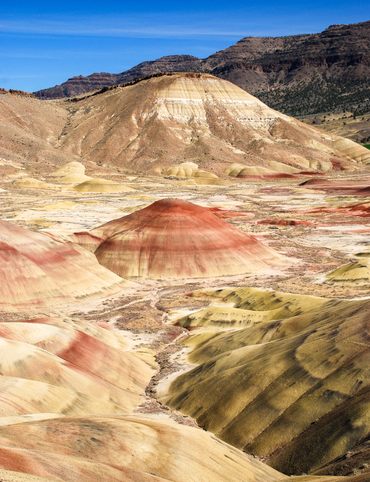
10 Out-of-This-World Places You Can Reach in Your Car

The Explorer’s Guide to Road Tripping Around Appalachia

The Explorer’s Guide to Road Tripping Down Highway 61

Gastro Obscura’s 10 Essential Stops on an Alternative London Pub Crawl

The Explorer’s Guide to Joshua Tree National Park

The Explorer’s Guide to the Great Smoky Mountains National Park

Cosmic Colorado: A Stargazer’s Guide to the Centennial State

The Explorer’s Guide to Banff National Park

10 Wild Places That Define West Virginia’s Landscape

The Ultimate Guide to Hidden Red Rocks: 10 Secret Passageways, Artifacts, and Ghost Stories

The Explorer’s Guide to Williamsburg, Virginia

The Explorer’s Guide to the British Virgin Islands

Gastro Obscura’s 10 Essential Places to Eat, Drink, and Shop in Hong Kong

A Denver Guide for National Park Lovers

Gastro Obscura’s 10 Essential Places to Eat and Drink in Oaxaca

A Gastro Obscura Guide to Family-Friendly Dining in San Diego

The Explorer’s Guide to Outdoor Wonders In Maryland

The Secret Lives of Cities: Ljubljana

From Cigar Boom to Culinary Gem: 10 Essential Spots in Ybor City

The Explorer’s Guide to Wyoming’s Captivating History

A Nature Lover’s Guide to Sarasota: 9 Wild & Tranquil Spots

California’s Unbelievable Landscapes: A Guide to Nature’s Masterpieces
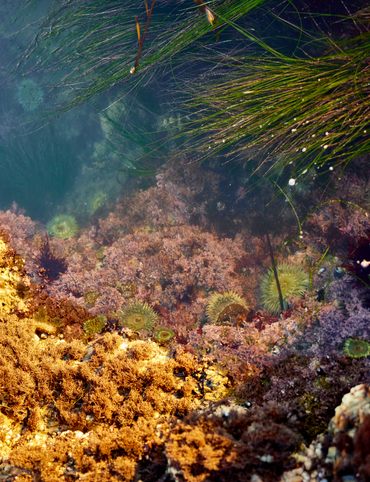
The Ultimate California Guide to Tide Pools and Coastal Marine Life

Explore California on Foot: Nature’s Year-Round Playground

Mardi Gras 9 Ways: Parades, Cajun Music, And Courirs Across Louisiana

The Explorer’s Guide to Winter in Germany

Ancient California: A Journey Through Time and Prehistoric Places

The Wildest West: Explore California’s Ghost Towns and Gold Fever Legacy

Sweet California: A Culinary Guide to Tasty Treats Across the State

Sea of Wonders: An Itinerary Through California’s Stunning Shoreline

10 Places to Taste Catalonia’s Gastronomic Treasures

Atlas Obscura’s Guide to Palm Springs

Atlas Obscura’s Guide to the 10 Most Mystifying Places in Illinois

10 Fascinating Sites That Bring Idaho History to Life

North Carolina's Paranormal Places, Scary Stories, & Local Haunts

Exploring Missouri’s Legends: Unveiling the Stories Behind the State’s Iconic Figures

These Restaurants Are Dishing Out Alabama’s Most Distinctive Food

A Gastro Obscura Guide to Los Cabos

9 Watery Wonders on Florida’s Gulf Coast

Discover the Surprising and Hidden History of Monterey County

Gastro Obscura’s Guide to Eating Your Way Through Charlotte

Talimena Scenic Byway: 6 Essential Stops for Your Arkansas Road Trip

9 Amazing Arkansas Adventures Along the Scenic 7 Byway

The Explorer's Guide to Highway 36: The Way of American Genius

A Behind-the-Scenes Guide to DC’s Art and Music

9 Places Near Las Vegas For a Different Kind of Tailgate

10 Places to See Amazing Art on Florida's Gulf Coast

8 Reasons Why You Should Visit the Bradenton Area

A Music Lover’s Guide to New Orleans

Gastro Obscura’s Guide to Sipping Wine in Catalonia

9 Hidden Wonders in the Heart of Kansas City

10 Unexpected Delights of Vermont's Arts and Culture Scene

Gastro Obscura’s Guide to Eating Through Maine

The Gastro Obscura Guide to Asheville Area Eats

Gastro Obscura’s Guide to St. Pete/Clearwater

9 Hidden Wonders in Eastern Colorado

7 Places to Experience Big Wonder in Texas

8 Out-There Art Destinations in Texas

6 Ways To See Texas Below the Surface

9 Places to Dive Into Fresh Texas Waters

7 Ways to Explore Music (and History) in Texas

8 Ways to Discover Texas’ Rich History

The Explorer’s Guide to the Northern Territory, Australia

The Explorer's Guide to U Street Corridor

Gastro Obscura Guide to Southern Eats

Only In Delaware

The Secret History & Hidden Wonders of Charlotte, North Carolina
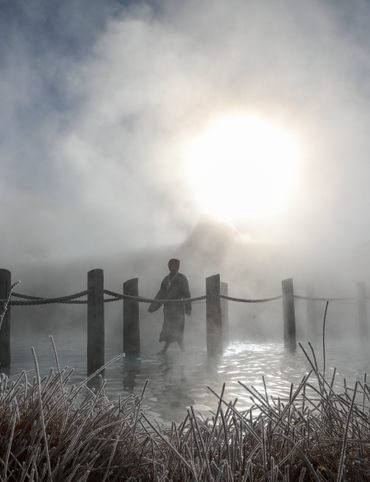
Exploring Colorado's Historic Hot Springs Loop

These 8 Arizona Ghost Towns Will Transport You to the Wild West
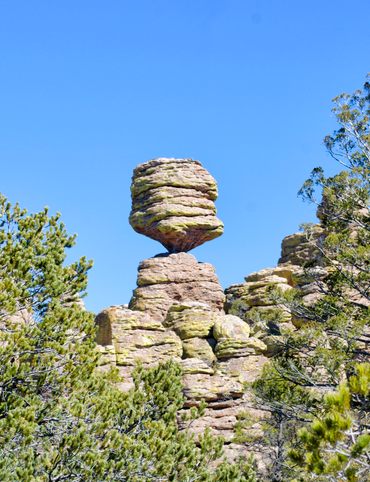
A Guide to Arizona’s Most Striking Natural Wonders

The Explorer's Guide to Hudson Valley, New York

Discover the Endless Beauty of the Pine Tree State

Travel to New Heights Around the Pine Tree State

8 Historical Must-Sees in Granbury, Texas

7 Creative Ways to Take in San Antonio’s Culture
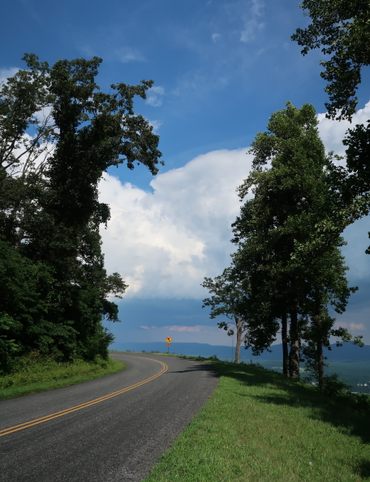
Eat Across the Blue Ridge Parkway

6 Ways to Absorb Addison, Texas’ Arts and Culture

6 Ways to Take in the History of Mesquite, Texas

6 Ways to Soak Up Plano’s Art and Culture

9 Dallas Spots for Unique Art and Culture

7 Sites of Small-Town History in Waxahachie, Texas

6 Natural Wonders to Discover in Austin, Texas

Discover the Secrets of Colorado’s Mountains and Valleys

A Feminist Road Trip Across the U.S.

All Points South

Asheville: Off the Beaten Path

Restless Spirits of Louisiana

Eat Across Route 66

18 Mini Golf Courses You Should Go Out of Your Way to Play

4 Underwater Wonders of Florida

6 Spots Where the World Comes to Delaware

Study Guide: Road Trip from Knoxville to Nashville

6 Wondrous Places to Get Tipsy in Missouri

Rogue Routes: The Road to Pikes Peak

Rogue Routes: The Road to Carhenge

4 Pop-Culture Marvels in Iowa

7 Stone Spectacles in Georgia

6 Stone-Cold Stunners in Idaho

8 Historic Spots to Stop Along Mississippi's Most Famous River

5 Incredible Trees You Can Find Only in Indiana

5 Famous and Delightfully Obscure Folks Buried in Kentucky

4 Wacky Wooden Buildings in Wyoming

7 Spots to Explore New Jersey’s Horrors, Hauntings, and Hoaxes

4 Out-There Exhibits Found Only in Nebraska

6 Sweet and Savory Snacks Concocted in Utah

12 Places in Massachusetts Where Literature Comes to Life

8 Places to Get Musical in Minnesota

8 Buildings That Prove Oklahoma's an Eclectic Art Paradise

9 Stunning Scientific Sites in Illinois

5 Strange and Satanic Spots in New Hampshire

8 Historic Military Relics in Maryland

5 of Colorado's Least-Natural Wonders

Rogue Routes: The Road to Sky’s the Limit

6 Hallowed Grounds in South Carolina

9 Rocking Places in Vermont

Knoxville Study Guide

Nashville Study Guide
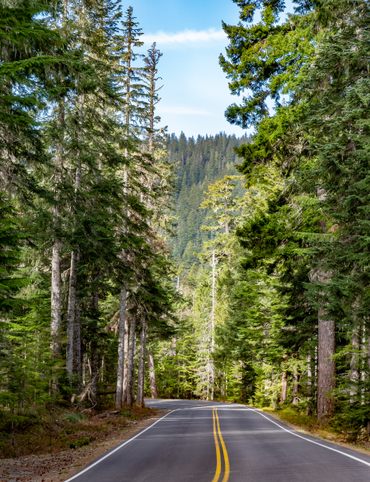
Rogue Routes: The Road to Camp Colton

Black Apples and 6 Other Southern Specialties Thriving in Arkansas

4 Monuments to Alabama’s Beloved Animals

The Dark History of West Virginia in 9 Sites

11 Zany Collections That Prove Wisconsin's Quirkiness
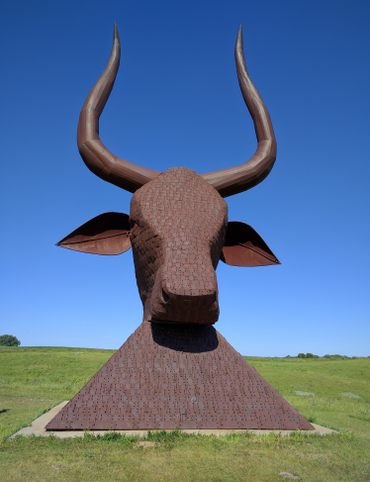
7 Inexplicably Huge Animals in South Dakota

6 Fascinating Medical Marvels in Pennsylvania

8 Places in Virginia That Aren’t What They Seem

7 Cool, Creepy, and Unusual Graves Found in North Carolina
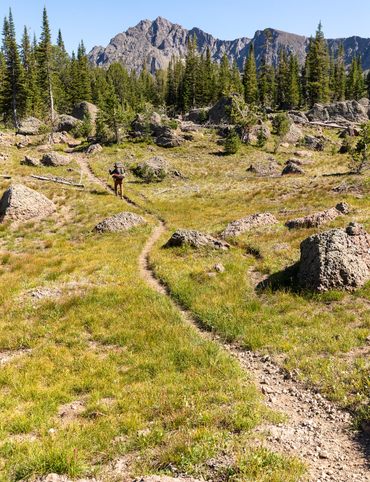
7 of Montana's Spellbinding Stone Structures

9 of Oregon’s Most Fascinating Holes and Hollows

Take to the Skies With These 9 Gravity-Defying Sites in Ohio

9 Strange and Surreal Spots in Washington State

8 Watery Wonders in Hawaiʻi, Without Setting Foot in the Ocean

6 Unusual Eats Curiously Cooked Up in Connecticut

11 Close Encounters With Aliens and Explosions in New Mexico
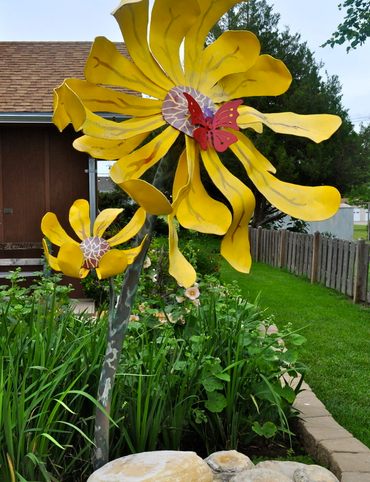
10 Places to Trip Way Out in Kansas

The Resilience of New York in 10 Remarkable Sites

7 Very Tall Things in Very Flat North Dakota

8 Blissfully Shady Spots to Escape the Arizona Sun

On the Run: NYC

On the Run: Los Angeles

9 Surprisingly Ancient Marvels in Modern California

10 Art Installations That Prove Everything's Bigger in Texas
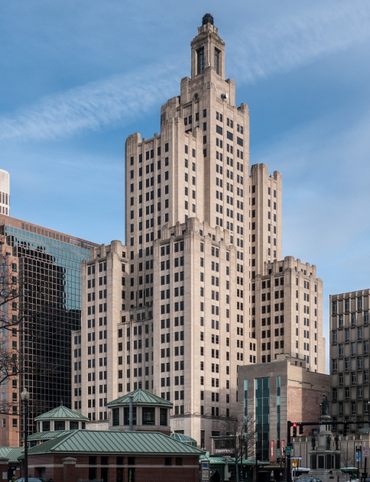
6 Huge Things in Tiny Rhode Island

7 Underground Thrills Only Found in Tennessee

Sink Into 7 of Louisiana's Swampiest Secrets

7 Mechanical Marvels in Michigan

11 Wholesome Spots in Nevada

7 Places to Glimpse Maine's Rich Railroad History

11 Places Where Alaska Bursts Into Color

9 Places in D.C. That You're Probably Never Allowed to Go

2 Perfect Days in Pensacola

Rogue Routes: The Road to the Ice Castles

Taste of Tucson

North Iceland’s Untamed Coast

Hidden Edinburgh
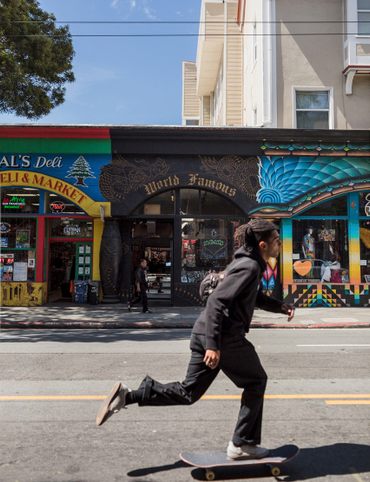
Hidden Haight-Ashbury

The Many Flavors of NYC’s Five Boroughs
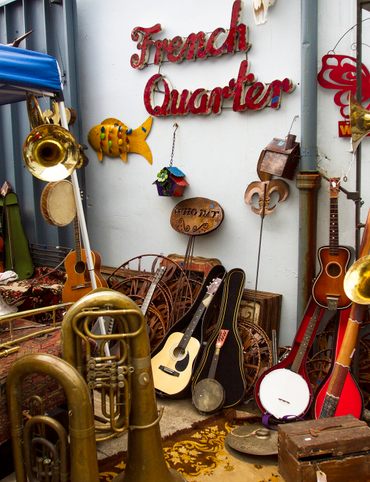
Hidden French Quarter

The Metropolitan Museum of Art
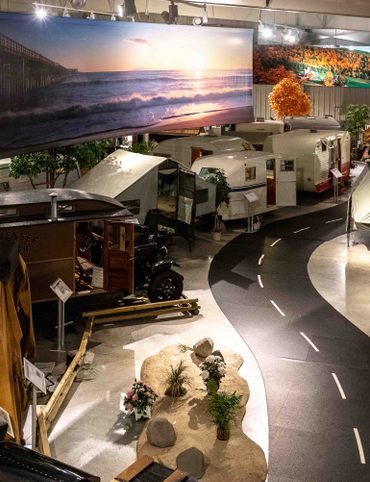
Motown to Music City Road Trip

Gulf Coast Road Trip

Hidden Coachella Valley
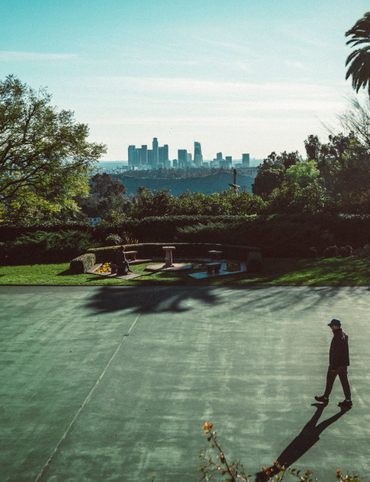
Highland Park

Venice

L.A.’s Downtown Arts District

Hidden Trafalgar Square

Secrets of NYC’s Five Boroughs

Mexico City's Centro Histórico

Hidden Hollywood

Hidden Times Square

Summer Radio Road-Trip

Amsterdam

Buenos Aires

Chicago

Detroit

Lisbon

Miami

Queens

San Diego









